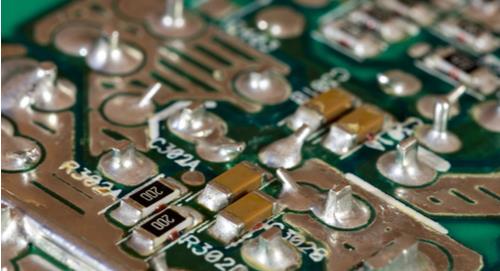PCB has evolved from single-layer to double-sided, multi-layer and flexible, and still maintain their respective trends. Due to the continuous development of high precision, high density and high reliability, volume reduction, cost reduction, and performance improvement, the printed circuit board still maintains strong vitality in the future development of electronic equipment. So how is the PCB designed?
1. Prepare in advance
Including the preparation of component libraries and schematic diagrams. Before continuing the PCB design, first prepare the SCH schematic component library and PCB component package library.
The PCB component package library is best constructed by the engineer according to the standard size of the selected device. In principle, first establish the PC component package library, and then establish the schematic SCH component library.
The PCB component package library has higher requirements, which directly affects the PCB installation; the schematic diagram SCH component library requirements are relatively loose, but we need to pay attention to the definition of pin attributes and the corresponding relationship with the PCB component package library.
2. PCB structure design
According to the determined circuit board size and various mechanical positioning, draw the PCB frame in the PCB design environment, and place the required connectors, buttons/switches, screws, holes, assembly holes, etc. according to the positioning requirements.
Fully consider and determine the layout area and non-layout area (for example, the scope of the screw hole is the non-layout area).

3. PCB layout design
The layout design is to place the parts in the PCB frame according to the design requirements. Generate the netlist in the schematic tool (Design-Create Netlist), and then import the netlist in the PCB software (Design-Import Netlist). After successfully importing the netlist, it will exist in the software background. Through the Placement operation, all components can be called up, and there is a flying wire between each pin to prompt the connection. At this point, the device can be laid out.
PCB layout design is the first important process in the entire PCB design process. The more complex the PCB board, the more the layout can affect the realization of the entire layout.
The layout design depends on the circuit foundation and design experience of the circuit board designer, which is the advanced requirement of the circuit board designer. The main circuit board designers lack experience and are suitable for small module layout design or low-difficulty PCB layout design tasks.
4. Design of the PCB layout line
PCB layout design is the most labor-intensive process in the entire PCB design, which directly affects the PCB. In the PCB design process, the layout line usually has three areas:
The first is layout work, which is the most basic entry requirement for PCB design;
Second, the electrical performance is satisfied. This is the standard for measuring whether the PCB board is qualified. After the layout is completed, it is carefully adjusted to achieve the best electrical performance.
Once again, it is neat and beautiful, chaotic and tidy, even after the electrical performance is passed in this way, it will bring great inconvenience to subsequent reforms and test maintenance. The layout is required to be neat and even, with no vertical and horizontal rules.
5. Layout optimization and silk screen layout
"PCB design is not the best, only better", "PCB design is a flawed art", mainly because PCB design needs to realize the needs of all aspects of hardware design, and personal needs may conflict, you can't eat Cake and eat too much
For example, after the evaluation, the PCB design project needs to be designed as a 6-layer board designed by the circuit board designer, but due to cost considerations, the product hardware must be designed as a 4-layer circuit board, so the signal shielding ground layer can only be sacrificed to produce adjacent layout. The signal crosstalk between layers increases and the signal quality decreases.
The general design experience is that the time to optimize the layout is twice the initial layout time. After the PCB layout optimization is completed, post-processing is required. The first thing to deal with is the silk screen mark on the surface of the PCB. The bottom screen printing characters need to be mirrored during design to avoid confusion with the top screen printing.
6.Network DRC inspection and structure inspection
Quality control is an important part of the PCB design process. General quality control methods include: design self-inspection, design mutual inspection, expert review meeting, special inspection, etc.
Schematic diagrams and structural element diagrams are the most basic design requirements. The network DRC check and the structure check are to confirm that the PCB design meets the two input conditions of the schematic netlist and the structural component diagram.
General-purpose circuit board designers will have their own accumulated design quality checklist, partly based on company or department specifications, and partly based on their own experience. Special inspections include Valor inspection and DFM design inspection. These two parts mainly focus on PCB design and output back-end processing lithography files.
7. PCB manufacturing board
Before the PCB is officially processed, the circuit board designer needs to communicate with the PE of the PCB supplier's board to answer the manufacturer's confirmation of the PCB board processing.
These include but are not limited to PCB board model selection, line layer line width adjustment, impedance control adjustment, PCB stack thickness adjustment, surface treatment process, aperture tolerance control and delivery standards.